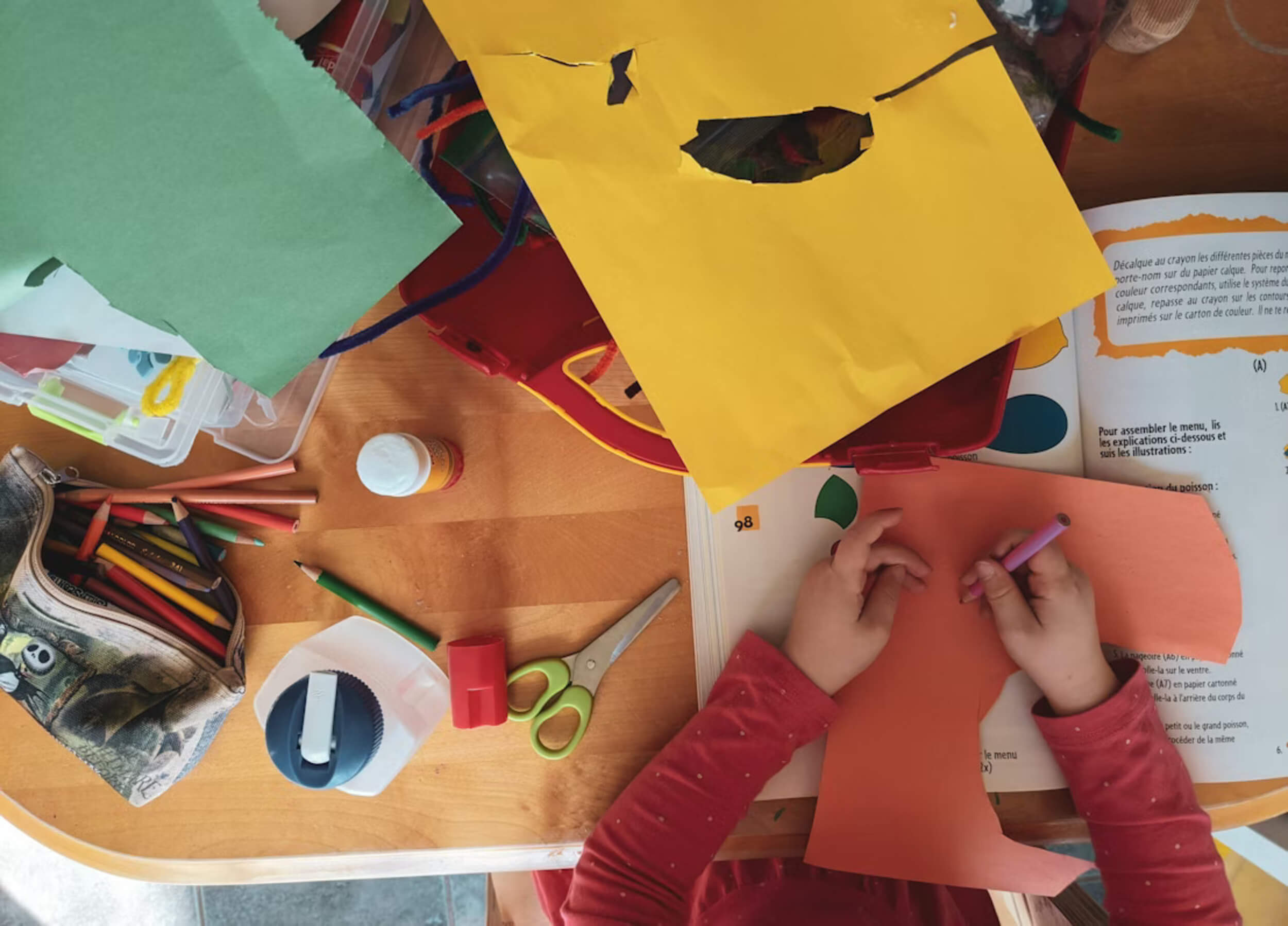Ever wonder how two siblings raised under the same roof can turn out completely different—one calm and quiet, the other outgoing and bold? Scientists have asked that same question for decades. It’s what sparked the famous nature versus nurture debate, which looks at whether our traits come from our genes or from the world around us.
Personality isn’t random. It’s the steady way we think, feel, and behave, shaping how we react to life’s challenges. Some of that comes from genetics and environment working together—your DNA sets the foundation, while your upbringing, culture, and experiences shape the final version of you.
To understand why you think and feel the way you do, it helps to see how biology and life experience share the work in shaping your personality.
Understanding Personality
Everyone has their own “default settings” — the steady way they think, act, and respond to life. That’s what psychologists call personality. It’s not a passing mood or a one-time reaction; it’s the pattern that stays consistent over time.
A mood shifts quickly — like feeling tired after a long day. An attitude changes with the situation — like being polite to a boss but casual with friends. But personality is the longer story, built from four key parts:
- Traits – the general patterns that describe us (like being calm or outgoing)
- Habits – what we do regularly without thinking
- Emotional tendencies – how we handle feelings and stress
- Motivations – what drives our choices
Scientists often use the Big Five model to study personality: openness, conscientiousness, extraversion, agreeableness, and neuroticism. Each one helps explain how genetics and environment shape who we are.
With a shared language to describe traits, we can ask how much of each one is wired into us—and how much life sculpts.
Nature’s Blueprint: The Genetic Foundations of Personality
Every person starts with a biological blueprint. Our genes affect how the brain manages emotion, reward, and stress — forming the base for our traits long before experience steps in.
Researchers studying twins have shown that even when raised apart, identical twins often share strikingly similar personalities. Studies suggest that 30% to 60% of personality differences come from inherited factors.
There isn’t one “personality gene.” Instead, thousands of small genetic effects work together — what scientists call polygenic influence. Some examples include:
- Dopamine receptor genes that affect curiosity and risk-taking (linked with novelty-seeking)
- Serotonin transporter genes that shape emotional balance and anxiety levels
These genes interact in complex ways, influencing how we think and feel. Still, genes aren’t destiny. They create possibilities, not fixed outcomes.
Research shows that genetics and environment work together. Genes may guide how sensitive we are to stress or joy, but life events decide how those traits unfold.
Yet genes don’t act alone—they respond to cues from the environment that can switch them on or off.
Nurture’s Hand: Environmental Influences on Personality
While genes lay the groundwork, life fills in the details. Family, culture, friendships, and experiences all shape personality in powerful ways.
Psychologists often describe two main types of environmental influence:
- Shared environment – things siblings experience together, like home life or parenting style.
- Non-shared environment – individual experiences, such as personal friends, teachers, or unique challenges.
Early childhood experiences play a major role.
- Secure attachment builds trust and confidence.
- Harsh or inconsistent care can lead to anxiety or fear of rejection.
As we grow, peer groups and culture take over. A teenager raised in a community that values independence might develop assertiveness, while one raised in a close-knit culture might learn cooperation and empathy.
Across cultures, social norms also shape behavior. Western societies may reward confidence; others may value harmony.
Research confirms that genetics and environment constantly shape and reshape personality.
But the most fascinating story lies not in genes or experience alone—it’s in their constant conversation.
The Dynamic Duo: Gene–Environment Interaction
Neither nature nor nurture works alone. Genetics and environment continually interact, forming the traits that make each of us unique.
This partnership is called gene–environment interaction. Genes set our potential, but surroundings decide how that potential shows up.
- Someone genetically inclined toward anxiety might stay calm with steady support but feel overwhelmed in a stressful home.
- A naturally confident person could lose motivation in an unsupportive environment.
Science also shows that experiences can change how genes behave through a process called epigenetics. Trauma, chronic stress, or nurturing care can “turn on” or “turn off” certain genes — shaping how emotions and behavior develop.
This means your life experiences can leave real biological marks that affect your emotional patterns later on.
From birth onward, this ongoing exchange fine-tunes our traits into the personalities we recognize.
Temperament: The Early Expression of Personality
Even as babies, we show glimpses of who we’ll become. Temperament is that early spark of personality — the natural rhythm of mood, activity, and adaptability.
Researchers usually describe three basic types:
- Easy – cheerful and flexible
- Difficult – intense, fussy, or easily upset
- Slow-to-warm-up – cautious and gentle in new situations
About 20% to 60% of temperament comes from genes, but early caregiving shapes how it develops. A calm, responsive caregiver can help a fussy baby learn to self-soothe, while harsh reactions might strengthen irritability.
Temperament also directs what a child experiences. A shy baby may avoid loud play, leading to fewer social interactions — reinforcing introversion over time.
Over time, these early patterns evolve into the broader personality traits we show as adults.
How Environment Shapes Those Genetic Seeds
What starts in the genes grows in the soil of daily life. Family, school, and culture give those seeds direction.
Children learn through social learning — by copying what parents, teachers, and peers do.
- Warm, supportive parenting builds confidence and emotional balance.
- Harsh or overly strict environments can increase anxiety or perfectionism.
Stress, education, and economic challenges also leave their mark.
A child who’s naturally responsible might become overly cautious if raised in chaos, or thrive in structure and routine.
These everyday lessons shape self-control, empathy, and motivation.
The mix of genetics and environment is what molds personality. Even people with similar DNA grow into different versions of themselves because their experiences rewrite their reactions and habits.
As personality matures, its shape reflects both the brain’s wiring and the world’s sculpting.
The Big Five Traits and Their Heritability
Scientists often use the Big Five model to describe personality. Each trait reflects both inherited tendencies and learned behaviors — a balance between genetics and environment.
- Openness to Experience
Linked with creativity and curiosity. Genes related to dopamine affect how open a person is to new ideas, while travel, reading, and diverse experiences expand it further. - Conscientiousness
Connected with self-control and organization. Genetics set the baseline for discipline, but routines, expectations, and life goals reinforce it. - Extraversion
Tied to the brain’s reward system. Some people naturally crave stimulation and social activity; others develop confidence through social practice and encouragement. - Agreeableness
Built on empathy and cooperation. Genes involving oxytocin help shape kindness, but role models and family warmth grow it stronger. - Neuroticism
Linked to emotional sensitivity and mood swings. Inherited brain chemistry plays a role, but support systems and coping skills help balance it.
Together, these five dimensions reveal how personality reflects both inherited wiring and learned behavior.
Can Personality Change Over Time?
Personality stays mostly steady but isn’t frozen. Major life events, relationships, or therapy can cause gradual change — what experts call plasticity.
Over the years, most people become more emotionally balanced and understanding. Growing responsibilities and experience teach self-control and empathy.
Even though genes stay the same, habits and attitudes can shift with effort. Building healthy routines, practicing mindfulness, or working with mentors helps people reshape behaviors within their natural limits.
This means genes start the story, but experience keeps rewriting the script.
Key Principles from Personality Research
Personality research highlights several key patterns:
- Maturity principle: People grow calmer, kinder, and more reliable with age.
- Identity development principle: A clear sense of self creates stability.
- Plasticity principle: Personality can change with effort and support.
- Role continuity: Life roles like parent, friend, or worker reinforce long-term traits.
These principles show that personality is both flexible and grounded — constantly adjusting as life unfolds.
Understanding these patterns helps us see personality as a living system—flexible yet rooted.
Takeaways: The Balanced View of Nature and Nurture
Personality grows from teamwork between genetics and environment. Genes create the structure; life experiences fill it with color and shape.
Each of us carries a mix of inherited traits and learned habits. Instead of choosing sides, it’s better to see how both work together to make us who we are.
Building self-awareness helps people use their strengths and manage what challenges them.
Your DNA may write the outline, but your life experiences fill in the story — one choice, one moment, one habit at a time.














